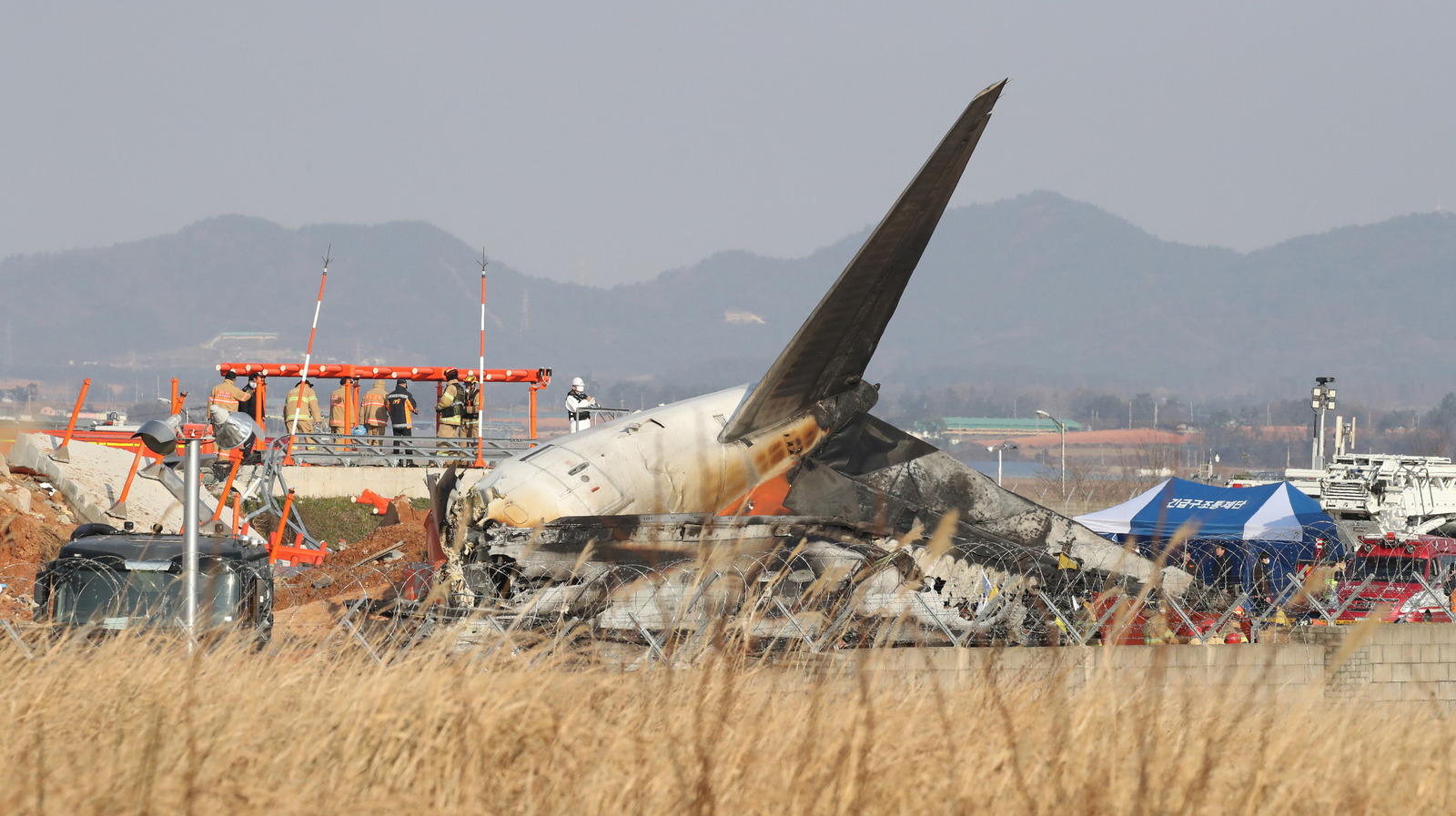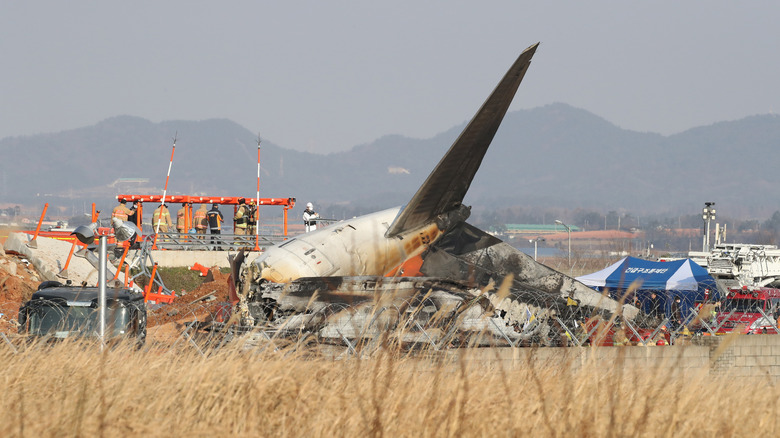Commercial aviation’s turbulent year began in late December with Jeju Air Flight 2216 crashing at Muan International Airport in South Korea, killing all but two people onboard. Investigators told the victims’ families on Saturday that the flight’s pilots shut off the less damaged engine after suffering a bird strike while approaching the airport. On the same day, South Korea’s Aviation and Railway Accident Investigation Board (ARAID) cancelled a press release about the crashed plane’s engines, fueling the dissatisfaction of Jeju Air pilots’ union with the investigation.
The bird strike alone likely won’t be officially declared the crash’s cause, but it sparked the chain of events that led to the catastrophic impact. The flight crew declared emergency after the bird strike. However, the landing gear failed to deploy for landing. The pilots attempted a belly landing and slid along the tarmac past the end of the runway. The Jeju Air Boeing 737-800 slammed into an earthen embankment bolstered by a concrete wall just 820 feet from the runway. The impact killed 179 people. The two surviving flight attendants were strapped into jump seats in the rear galley, which broke free during the crash with the rest of the tail section and avoided the fiery impact.
The pilots’ union claim investigators are unfairly blaming the flight crew
There are still many questions surrounding the crash, with the final report yet to be released. According to Reuters, Jeju Air pilots’ union claims that ARAID is preparing the ground to place the blame on the flight crew. Eyewitnesses on the ground saw flames and sparks trailing from the right engine after the bird strike, but the pilots shut off the left engine. Despite duck remains being found in both engines, investigators have suggested that nothing was wrong with the left engine. Additionally, there has been no evidence provided that the landing could have been safely completed with a single engine.
The pilots’ union and the victims’ families believe that investigators are ignoring the other circumstances around the crash, especially the airport itself. First, the aircraft would have safely slid to a halt if Muan International Airport didn’t have its unusual earthen barrier at the end of the runway. Officials claimed it was to protect facility instruments, but most major airports leave them exposed to allow ample open space for overrunning aircraft. Second, the local bird population was a known danger at Muan. There are three bird habitats around the airport. Korean regulations required that four airport employees must be tasked with driving birds away from the runway. However, only one person was on duty the day of the crash, the Korea Herald reported. Also, the deployment of recommended bird mitigation technology, like sound cannons, was delayed due to renovations to lengthen the runway.
It would be absurd to declare the crash as solely pilot error when there were multiple contributing factors. Failing to identify those factors in either the press release or the final report could lead to those issues not being addressed and potentially contributing to a future fatal crash.




